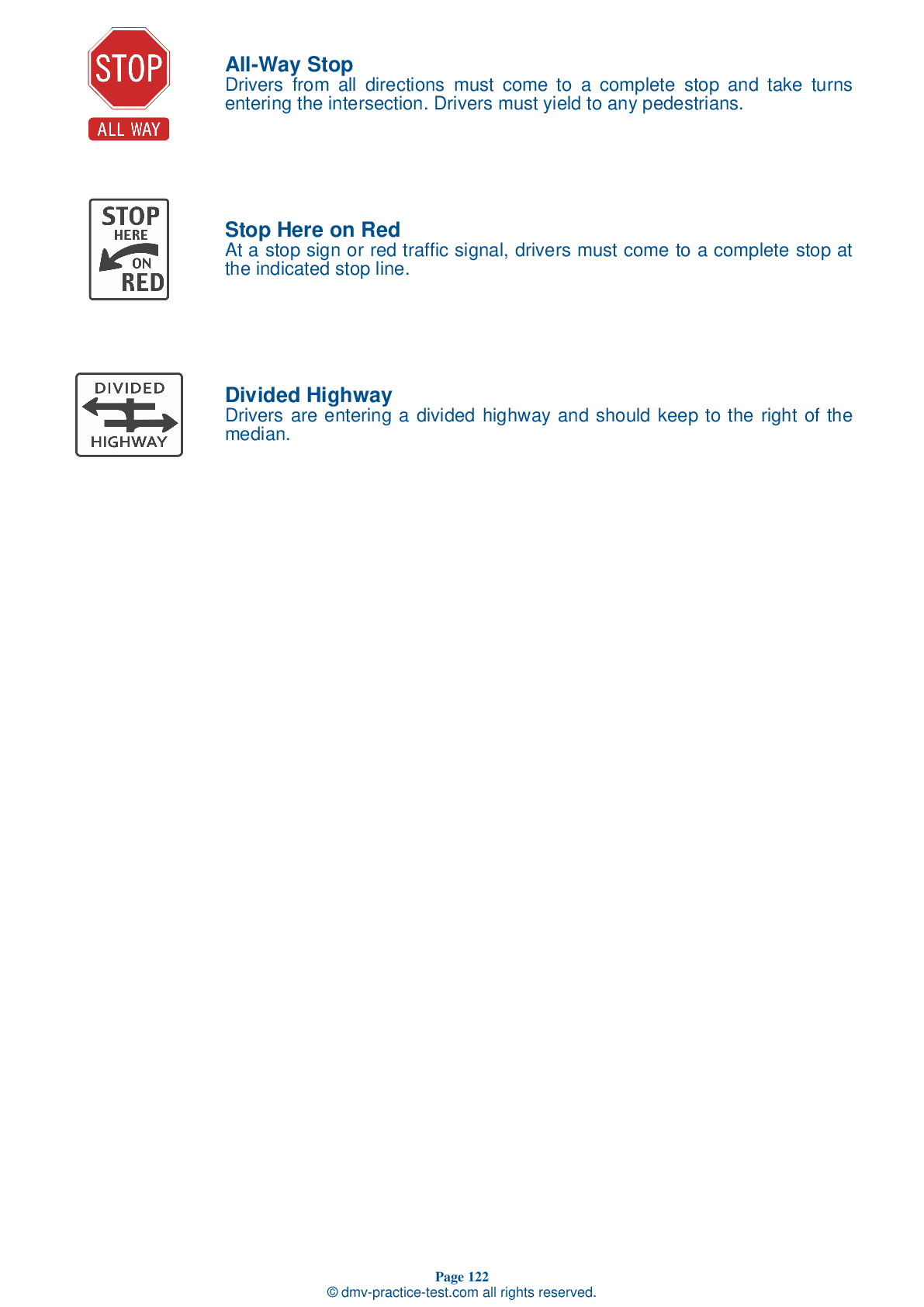Air Brakes Endorsement Test | Maryland 2025 #1 Page 4 of 4
Train for FREE online with our Maryland CDL air brake test. The official exam test consists of several obligatory parts, with all of them checking your knowledge of different blocks of road rules. If you need to obtain a MD Class A/Class B driver license in 2025, practice as much as possible. Free sample tests published on our website will help you check and improve your knowledge and boost your grades. Please bear in mind that the requirements for CDL may vary from state to state.
19 . What color are ABS malfunction lamps?
Vehicles with Anti-Lock Braking Systems (ABS) have yellow malfunction lamps.
20 . To stop in a vehicle that uses air brakes, the driver should:
To make a normal stop in a vehicle with air brakes, push the brake pedal down. The harder the pedal is pressed, the more air pressure is released.
21 . Air tank drains:
Compressed air in an air brake system usually contains a certain amount of water and compressor oil. The water and oil can damage the brakes if left to accumulate in the system. Manually operated air tank drains must be opened daily to remove this build-up.
22 . Most heavy-duty vehicles use ____ air brake systems.
The majority of heavy-duty vehicles are equipped with dual air brake systems.
23 . During a static leakage test, the maximum leakage rate for a double combination vehicle is:
When performing a static leakage test on a double combination vehicle with air brakes, the leakage rate should be no more than 3 psi in one minute. If air leaks from the air brake system at a quicker rate, the vehicle should not be driven because something likely needs to be repaired.
24 . Air tank drains:
Compressed air in an air brake system usually contains a certain amount of water and compressor oil. The water and oil can damage the brakes if left to accumulate in the system. Manually operated air tank drains must be opened daily to remove this build-up.
25 . Air tank drains should:
In an air brake system, air tank drains are used to remove water and compressor oil from the air tanks. When operating a drain, be sure to drain the tank completely.
See the exact questions that will be on the 2025 Maryland DMV exam.
99.2% of people who use the cheat sheet pass the FIRST TIME
Lillian MCcranie explains how our CDL study guide was helpful in passing the exam and recommends it to everyone.
Cameron tells us how he purchased the CDL exam, and found it to be a useful tool which helped him pass the exam and find a job.



